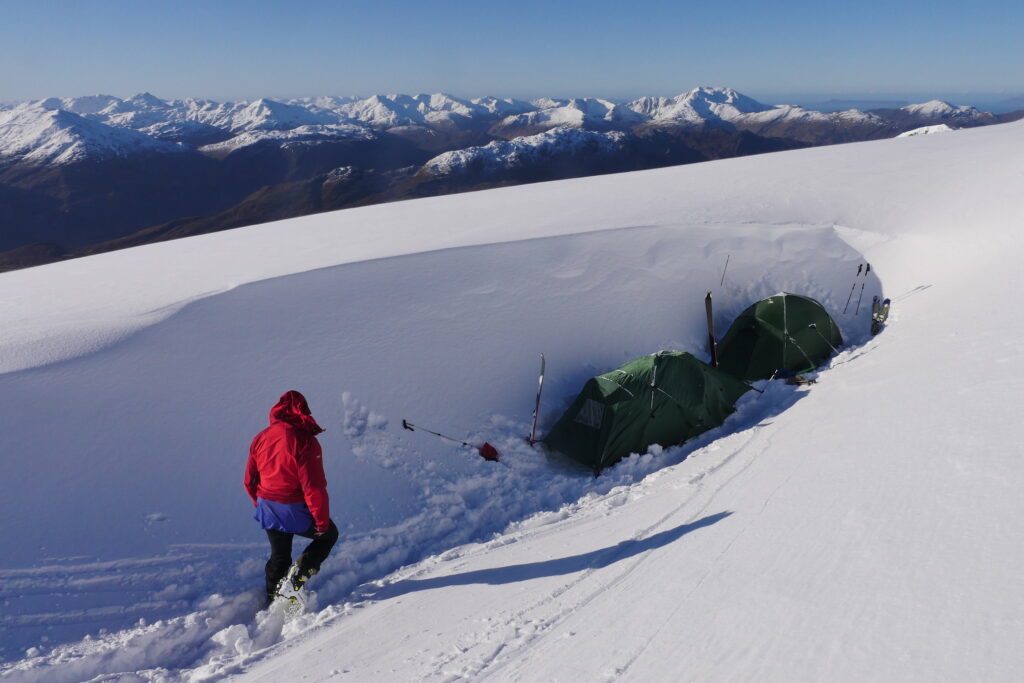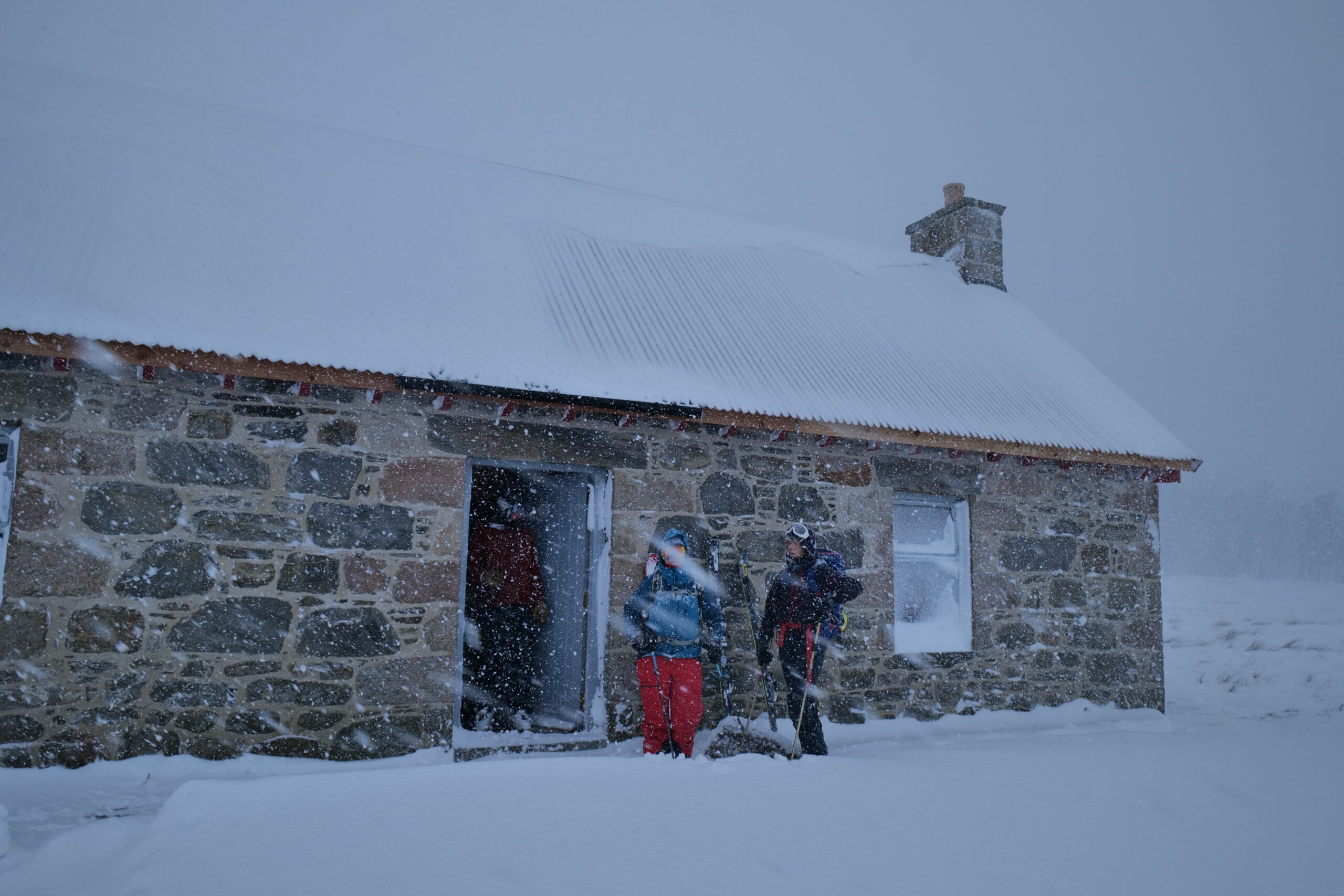Ski camp/bothy kit list
The following kit list will help to ensure essential items are not overlooked.
A major consideration is the nature of the approach which, depending on conditions & location, can be by ski, walking, cycling or even canoeing/kayaking. Additional kit is required for bikes & water- based approaches.
Normal kit for a day touring is in addition to the list below
- Bothy trip
Large capacity rucksack: Ideally one which has a flexible frame so it can be compressed for use as a touring sack
Sleeping bag: A down bag which compresses to a small size with a comfort rating down to -2 deg or greater. Additional warmth can always be gained by wearing extra layers
Sleeping mat: Most bothy’s now have wooden sleeping platforms which although hard provide good insulation from the cold underneath. A decent small self- inflatable mat is best although a closed cell mat will suffice.
Clothing: Normal hill touring kit plus a duvet type jacket, a gilet, change of thick socks & a spare pair of gloves. Pyjamas are an avoidable luxury as you’ll likely be sleeping in your clothes.
Footwear: Bothy shoes, down slippers, crocs or equivalent are extremely useful. However, ski inner boots are a good weight & space saving alternative.
Stove & Gas: One stove shared between two is normal. Budget for 50gr of gas per day assuming boil in bag type main meal & no use during the middle of the day
Lighting: Standard hill torch will suffice with new batteries. Candles are always a great idea but extra weight.
Food: Personal preference but sandwiches should be premade, freeze- dried main meal, measured quantities of breakfast cereal, hill food.
Fluid: bladder containers are best as they take up the least space. A flask is a space & weight consuming luxury best avoided.
Heating: Most, but not all, bothies have a stove or open fire. Some locations have wood nearby but in winter assume the wood to be damp or unavailable. Therefore, carrying fuel is a heavy but essential luxury with coal the best for weight/warmth/size. Don’t forget enough firelighters for each nights stay wrapped to keep dry & packed externally to prevent contamination of food, clothing etc
Ski carry: Skis may need carried a considerable distance so experiment with the best most secure way of carrying. A ski strap is essential
Dry Bags: packing kit into smaller dry bags reduces the possibility of a damp sleeping bag & on the hill keeps damp clothing separate from dry clothing
- Camping trip
Lightweight 4 season tent: Winter ski camping generally only takes place in settled weather. Freezing condensation is often a problem so for more than one night consider taking a bivvy bag to keep the sleeping bag dry
Thermal Mat: Cold seeping through from the ground is a major reason for discomfort in winter so a mat with a high R value will make for a huge difference. Using the rucksack plus other spare kit under or over the mat will help
Winter tent pegs: Snow pegs are expensive but will tether the tent in deep snow. Ski poles & even the skis can also be used when the ground is too hard or the snow is too soft to take normal pegs.

- Ski/Walk approach
The least complicated with no extra kit required other than for walking a pair of approach shoes or walking boots will be required if there is insufficient snow to ski the route.
- Cycle approach
Walking boots or decent trainers: Essential to cycle in & also good to double up as bothy slippers
Panniers/cycle rack: Transferring the weight of kit from your back to the bike makes a big difference to stability & progress
Ski carry: There is no agreed method of carry with some carrying skis on the rucksack on the back & others lashing the skis along the frame. The latter is preferred but may not work on bikes with big front suspension. Use of bungie cords & cut bits of old karrimat will help secure the skis & protect the bike frame
Boots carry: Best attached to the rear panier rack using bungees. Attached to the skis carried on the rucksack, as you would approaching the snow, will mean a huge load on the back so isn’t recommended.
- Canoe/kayak approach
Drysuit: A capsize in winter could be life threatening so for water- based approaches its recommended one is worn
Dry bags: The usual assembly of different sized dry bags is essential to keep all your kit dry.
Bungee cords: Skis need stowed on top of the kayak or inside the canoe. Bungee straps will keep the skis secured in place ensuring balance is maintained & moreover in the unlikely event of a capsize will prevent loss of skis.


